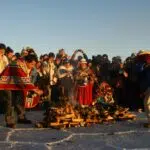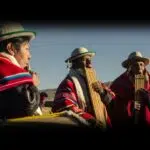Martyrs’ Day in Togo is observed each year on June 21 in the West African country of Togo to commemorate the sons and daughters of the land, who had lost their lives throughout the country’s struggle for freedom, and subsequently for liberation, from poor governance. It is a day on which families remember the memories of their lost ones. Togo has had a turbulent past throughout its short history, first from colonial powers, and then against its military dictators. The country was formerly colonized by both the British and the French, giving it a diverse modern history.
History of Martyrs' Day in Togo
The observation of Martyrs’ Day in Togo began after the country gained independence from France in 1960. It follows the loss of Togolese lives in their fight for independence from the French. However, the observation of the day isn’t restricted to the commemoration of all the dead who lost their lives in the fight for independence anymore. It now extends to remembering all dead Togolese, who were martyred during the country’s fight for independence, in the country’s subsequent military coups, and in the fighting against dictatorship.It is noteworthy that Togo has a short history, which hasn’t been particularly impressive. In the 19th century, following the partition of Africa by European powers, Togo was annexed by the Germans as its protectorate, and in 1905, it became a German colony. Shortly after WW1, the country fell under the rule of both the colonial British and French powers, who each claimed parts of Togo — the western part went to the British and the eastern part to the French. For more than three decades, Togo remained under the two countries’ rule, until Western Togo was annexed as part of the newly independent Ghana, while the other parts of the country remained under French rule. In 1960, after many sacrifices, Togo became an independent nation known as the Republic of Togo.Independence marked a new phase of coups and bloodshed. Three years after independence, a military coup deposed the first president of the nation and another coup overthrew the second president, four years after the first. From 1967 to 2005, the country was ruled by a single dictator, in whose regime, more lives were lost than in all previous unrest in the country. Perhaps, that is why Martyrs’ Day observation focuses more on the deaths of citizens in the colonial times and dictatorial rule.
Martyrs' Day in Togo timeline
Germany claims the Togoville region as its protectorate.
The British and French governments claim alternate parts of Togo.
Togo gains independence from France.
President Sylvanus Olympio is assassinated in a coup.
The second President; Nicolas Grunitzky, is overthrown by Gnassingbe Eyadema, who assumes the country's leadership.
President Gnassingbe dies, ending his 38-year-chokehold on power.
Martyrs' Day in Togo FAQs
Does Togo have an Independence Day?
Yes, it does. Independence day in Togo is celebrated on April 27.
Why is Togo the saddest country?
It is not the saddest country per se, but it really is a sad country. It has not seen sustained periods of peace throughout its short history from 1884.
Is Togo the smallest country in Africa?
No, but it is the third-smallest country in West Africa after The Gambia and Guinea Bissau.
How to Observe Martyrs' Day in Togo
-
Lay wreaths on graves
Honor the martyrs by getting nice flower bouquets and placing them on the graves of all fallen heroes in your hometown. Remember the departed Togolese.
-
Retell the stories of the struggles
Recount and reminisce the tales of the struggles of the lost sons and daughters of the land. Let younger generations learn the tumultuous history of their country.
-
Organize honorary events
Whether it is a play, an exhibition, or a musical festival, organize one that depicts the struggles and sacrifices of all fallen Togolese. Be proactive.
5 Facts About Togo You May Find Interesting
-
Dry ceremonies
Food is not served in all ceremonies except in pagan ritual ceremonies where animals are sacrificed.
-
Healing methods
Traditional healing methods still prevail over other types of healing in Togo.
-
Voodoo market
There are thriving voodoo markets in every part of the country.
-
Has a UNESCO site
Koutammakou in Togo, known worldwide as the Land of Batammariba, is a UNESCO World Heritage Site.
-
Highest peak
Mount Agou, which falls just a little short of 3,280 feet above sea level, is the highest peak in Togo.
Why Martyrs' Day in Togo is Important
-
It celebrates heroes
The day commemorates all those who strived to see a better Togo. The day also marks the sacrifices they made towards that cause.
-
It reminds us of the county's history
Since the day is all about the deaths that occurred in the struggles throughout the history of the country. Therefore, it reminds us of the country's history which serves as a guide for the future.
-
It reveals the country's cultural heritage
Cultural displays are part of the events organized to observe the day. Hence, it allows us to see the cultural richness of the country.
Martyrs' Day in Togo dates
| Year | Date | Day |
|---|---|---|
| 2023 | June 21 | Wednesday |
| 2024 | June 21 | Friday |
| 2025 | June 21 | Saturday |
| 2026 | June 21 | Sunday |
| 2027 | June 21 | Monday |
































